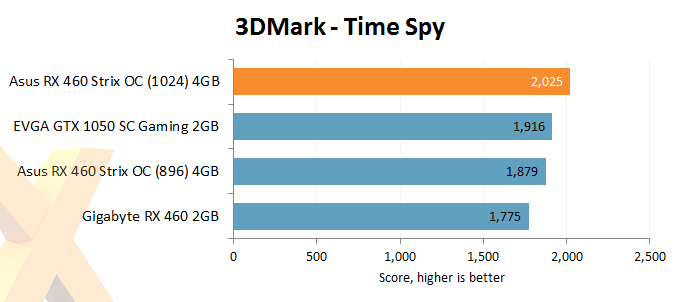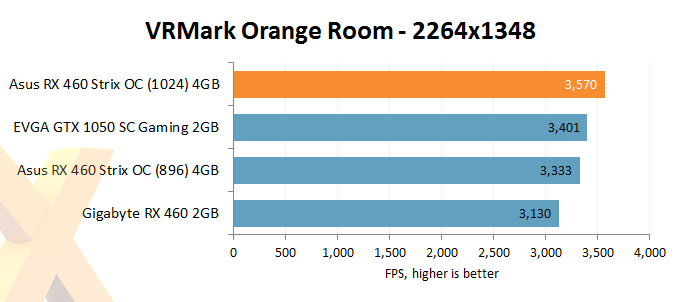Gaming I



A 3DMark Time Spy score of around 2,000 marks suggests that a system is capable of running games at a 1080p resolution married to high-quality settings, based on the benchmark scores we have seen in the last year.
According to developer Futuremark, the Orange Room test mimics the demands of popular VR solutions such as the HTC Vive and Oculus Rift, and any score above 5,000 is a pass. What this shows, indirectly, is that while RX 460 is a decent performer, it lacks the innate horsepower to drive a fluid, immersive VR experience.
AMD is keen to extol the virtues of Vulkan - the close-to-metal API that is able to free up the CPU and let the GPU do its thing. Set to ultra, we rarely saw the framerate dip below 60fps for the 4GB card, and it's a great game to play when paired up with a FreeSync screen. Indeed, we used it in conjunction with that £109 monitor alluded to on the first page.
However, and it's a big one, the 2GB cards suffered in the same test, suggesting that the amount of traffic over the bus increases hugely when there's only half the memory. Is there a reason for 4GB? Yes, in certain games there is.
What about the 1,024-core RX 460? The extra shaders offer around seven per cent more performance, for free, and that's enough horsepower to overtake the GTX 1050 at every test, easily so in the memory-limited Doom scenario. Who doesn't like stuff for free, right?









